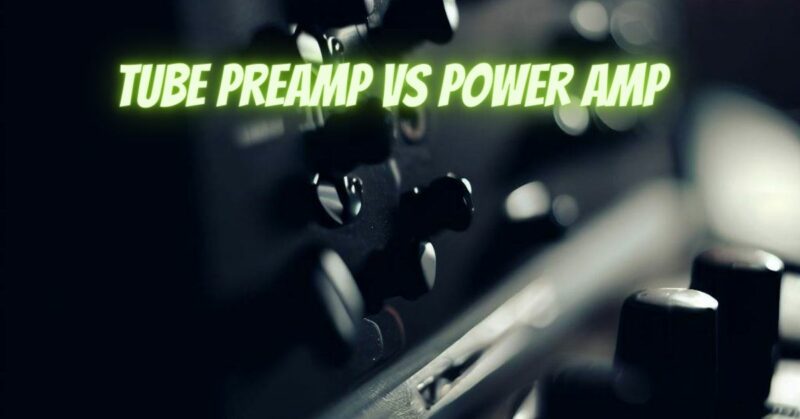The heart of any guitar amplifier lies in its signal processing and amplification stages, with tube preamps and power amps playing pivotal roles in shaping the final tone. Understanding the differences between these two components is essential for guitarists seeking to fine-tune their sound. In this article, we’ll delve into the distinctions between tube preamps and power amps, exploring their functions, characteristics, and contributions to the overall guitar amplification chain.
Tube Preamp: Enhancing and Shaping the Signal
1. Signal Amplification:
The tube preamp is responsible for boosting the initial, relatively weak guitar signal to a level suitable for further processing and amplification.
2. Harmonic Distortion:
One of the hallmark characteristics of tube preamps is their ability to introduce harmonic distortion to the signal. This distortion adds warmth, richness, and a touch of vintage character to the tone.
3. Tone Shaping:
Tube preamps often feature tone controls such as EQ adjustments and gain settings, allowing guitarists to sculpt their sound before it reaches the power amp.
4. Responsiveness and Dynamics:
Tube preamps are known for their dynamic response to playing dynamics. They react to changes in pick attack and volume nuances, resulting in expressive and responsive tones.
Power Amp: Amplifying the Signal
1. Signal Amplification:
The power amp takes the signal from the preamp and amplifies it to a level that drives the speakers, producing audible sound.
2. Clean Amplification:
While tube preamps introduce harmonic distortion, power amps aim to amplify the signal cleanly, ensuring accuracy and fidelity in reproducing the preamp’s tonal characteristics.
3. Headroom and Volume:
Power amps provide headroom, which refers to the amount of available power before distortion occurs. More headroom allows for higher volume levels without introducing unwanted clipping or distortion.
4. Speaker Matching:
Power amps need to match the impedance of the connected speakers to ensure efficient power transfer and optimal sound quality.
Balancing Tube Preamps and Power Amps
1. Tonal Balance:
The choice of tube preamp and power amp combination affects the overall tonal balance of the amplifier. Pairing a warm and saturated tube preamp with a clean and transparent power amp can lead to a balanced yet dynamic sound.
2. Genre and Style:
Different genres and playing styles might call for specific combinations of tube preamps and power amps. For instance, rock players might prefer a more aggressive preamp with a powerful power amp.
3. Experimentation:
Exploring various combinations of tube preamps and power amps can lead to unique sonic textures and tonal landscapes. Experimentation is key to discovering your ideal sound.
Tube preamps and power amps are essential components in the realm of guitar amplification, each playing a distinct role in shaping the final tone. Tube preamps introduce harmonic distortion, warmth, and tonal shaping, while power amps provide clean amplification, headroom, and the necessary power to drive speakers. The balance between these components influences the overall tonal character and responsiveness of the amplifier. By understanding their functions and characteristics, guitarists can make informed choices when selecting equipment, achieving the sonic palette that best aligns with their musical vision and style.


